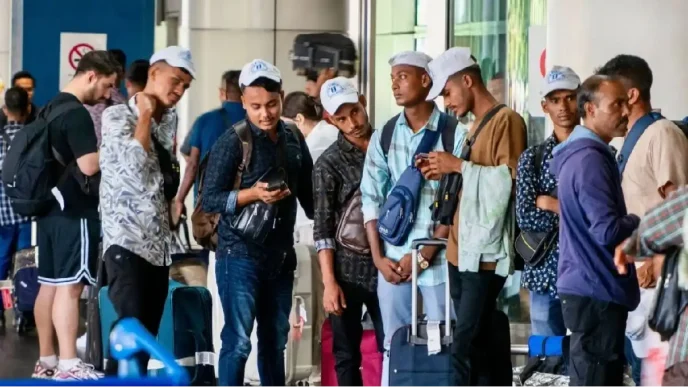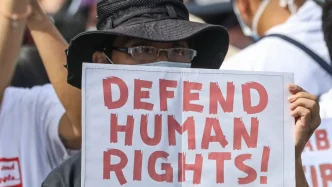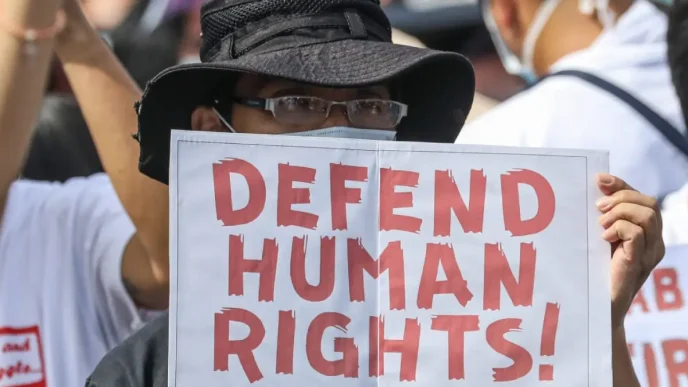The Armed Forces of the Philippines (AFP) has expressed enthusiasm over reports that a second US Mid-Range Capability (MRC) Typhon missile system is en route to the country, marking a significant step in the deepening military cooperation between Manila and Washington. This development, announced on March 26, 2025, comes amid rising tensions in the Indo-Pacific region, particularly in the South China Sea, where territorial disputes with China continue to simmer.
A Strategic Partnership in Focus
The arrival of the Typhon missile system, a sophisticated mid-range weapon developed by the US Army, underscores the strategic importance of the Philippines in the broader US Indo-Pacific Command (Indopacom) framework. The first Typhon system was deployed to the Philippines on April 11, 2024, and has since been integrated into joint military exercises, including the prominent Balikatan drills. It was last stationed in Ilocos Norte, a northern coastal province facing Taiwan—an area of geopolitical sensitivity due to China’s claims over the self-governing island as part of its territory.
AFP spokesperson Col. Francel Margareth Padilla highlighted the potential benefits of the additional missile system during a press briefing. “This is a welcome development for the Armed Forces of the Philippines. We can say that the more the merrier. So the more assets that we have, the more also that we are able to train more personnel on our part. So we accept this willingly” she stated. Similarly, Philippine Army spokesperson Col. Louie Dema-ala emphasized the training advantages, noting, “We welcome events like this because this would help our personnel train faster. So we welcome if it will arrive.”
The enthusiasm from Philippine military officials reflects a broader push to modernize the country’s defense capabilities. AFP Chief-of-Staff Gen. Romeo Brawner Jr. has been vocal about his desire for the Typhon system to remain in the country indefinitely. “I want the Typhon missile to stay in the country forever” he said, adding a hope that the Philippine government might one day acquire its own system.
Training and Exercises: Building Capacity
The integration of the Typhon missile system into Philippine military training has already yielded results. Since its arrival in 2024, the system was utilized during the Balikatan exercises, an annual joint military drill between the US and the Philippines aimed at enhancing interoperability and readiness. In February 2025, the Philippine Army conducted the next phase of its Combined Arms Training Exercise (Catex Katihan) specifically for MRC missiles, preparing for the Salaknib Exercise, which began on Monday at Fort Magsaysay in Nueva Ecija.
These exercises are not merely routine; they are a direct response to the evolving security challenges in the region. The South China Sea, a critical maritime corridor through which trillions of dollars in trade pass annually, remains a flashpoint due to overlapping territorial claims involving China, the Philippines, Vietnam, and other nations. The presence of advanced US weaponry like the Typhon system in the Philippines sends a clear signal of deterrence, though it also risks escalating tensions with Beijing, which has repeatedly criticized US military involvement in the region.
According to a report by Defense News, the US Army’s 3rd Multidomain Task Force unit is preparing its Typhon battery for deployment in the Pacific theater. If confirmed, this would mark the second such system to enter the region, further bolstering the US military footprint in Southeast Asia. While the exact timeline for the arrival of the second system remains unclear, its anticipated deployment has already sparked discussions about the long-term implications for Philippine defense strategy.
Geopolitical Implications and Regional Tensions
The strategic positioning of the Typhon missile system in Ilocos Norte is particularly noteworthy. Located in the northern Philippines, the province faces the Luzon Strait, a critical waterway separating the Philippines from Taiwan. China, which views Taiwan as a renegade province subject to reunification, has long been wary of foreign military presence in this area. The stationing of US missile systems so close to this sensitive region could be perceived as a provocative move, potentially heightening diplomatic friction.
Analysts suggest that while the Typhon system enhances the Philippines’ defensive capabilities, it also places the country at the center of a broader geopolitical chessboard. The US-Philippines alliance, formalized through agreements like the Mutual Defense Treaty of 1951 and the Enhanced Defense Cooperation Agreement (EDCA) of 2014, has gained renewed significance under the administration of President Ferdinand Marcos Jr., who has prioritized strengthening ties with Washington. This contrasts with the more ambivalent stance of his predecessor, Rodrigo Duterte, who at times sought closer relations with China.
However, the deepening military cooperation with the US is not without domestic and regional challenges. Within the Philippines, there are concerns about sovereignty and the risk of being drawn into a larger conflict, particularly if tensions over Taiwan escalate. Public sentiment, as reflected in various online discussions on platforms like X, shows a mix of support for enhanced defense capabilities and apprehension about becoming a proxy in a US-China rivalry. Meanwhile, neighboring countries, wary of China’s response, may also view the missile deployment with caution.
Technological Edge and Future Aspirations
The Typhon missile system represents a significant technological advancement for the Philippine military, which has historically relied on outdated equipment and limited resources. Capable of striking targets at mid-range distances with precision, the system is designed for multi-domain operations, integrating land, sea, and air capabilities. Its presence offers Philippine forces a rare opportunity to train with cutting-edge technology, building skills that could prove invaluable in future conflicts or crises.
Gen. Brawner’s expressed desire to acquire a Typhon system for the Philippines reflects a long-term vision of self-reliance in defense. However, the financial and logistical challenges of such an acquisition are substantial. The cost of a single Typhon battery, while not publicly disclosed, is likely to run into hundreds of millions of dollars, a significant burden for a country with competing budgetary priorities in areas like infrastructure, education, and healthcare. For now, the focus remains on maximizing the training opportunities provided by the US deployments.
Looking Ahead: Balancing Security and Diplomacy
As the Philippines prepares to receive a second Typhon missile system, questions linger about the broader implications for regional stability. While the enhanced military cooperation with the US undoubtedly strengthens Manila’s position in territorial disputes, it also risks complicating diplomatic efforts to manage tensions with China through dialogue and multilateral frameworks like the Association of Southeast Asian Nations (ASEAN).
For now, the AFP remains focused on the immediate benefits of training and capacity-building. The upcoming Salaknib Exercise, alongside ongoing joint drills, will likely serve as a testing ground for the integration of advanced US systems into Philippine military operations. Yet, as these developments unfold, both policymakers and the public will be watching closely to see how this partnership shapes the country’s role in an increasingly volatile Indo-Pacific landscape.
Amid the strategic maneuvers and military exercises, the human element remains central. For the soldiers training in Nueva Ecija and Ilocos Norte, the arrival of advanced weaponry is not just a geopolitical statement but a tangible step toward safeguarding their nation’s future—a responsibility they carry with pride and determination.














